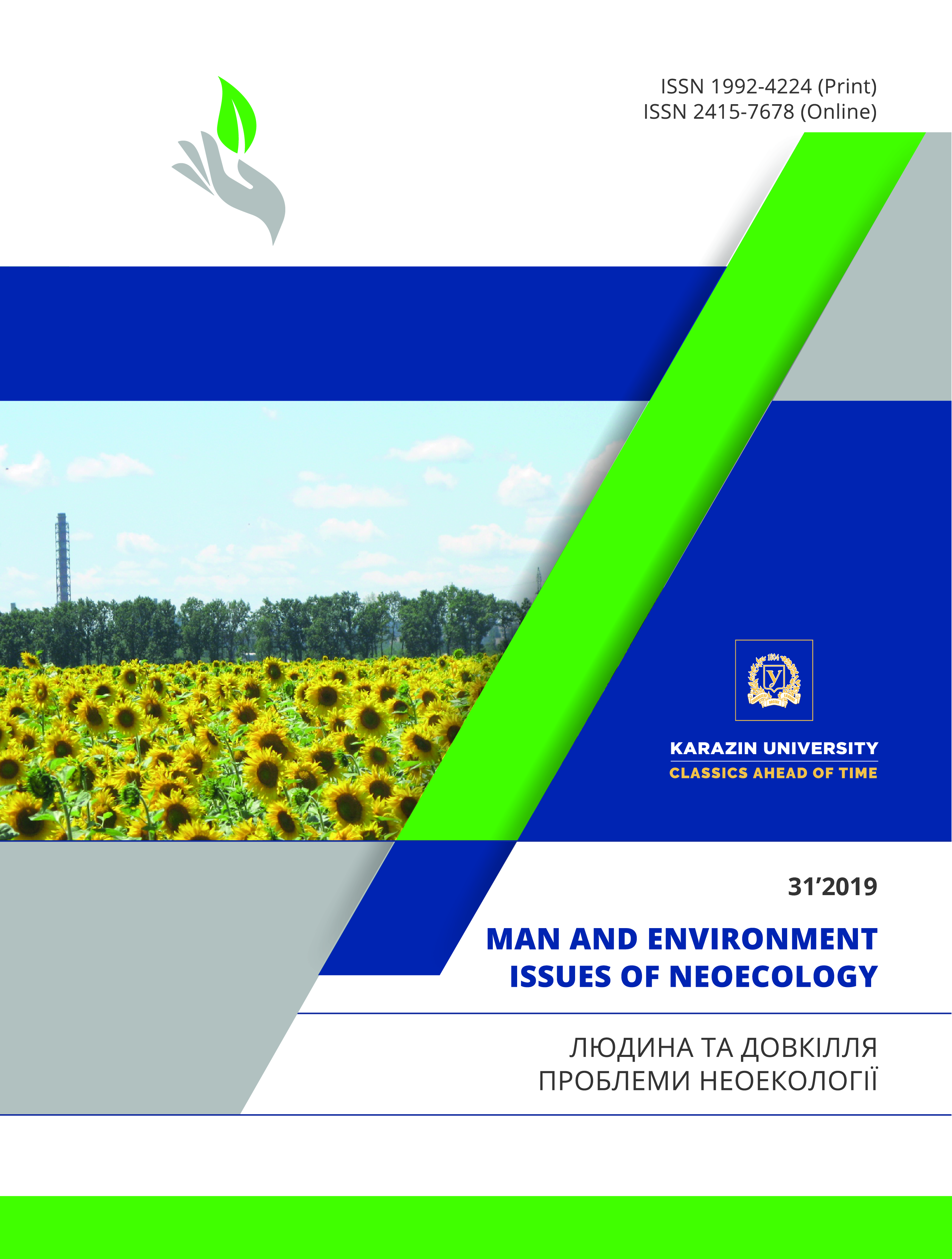Macrozoobenthos State in Odessa Bay Coastal Waters in 2016-2017
Abstract
Purpose. Study of macrozoobenthos contemporary state in Odessa Bay coastal waters in 2016-2017. Methods. Standard methods of macrozoobenthos sampling, determination, estimation of number and biomass Results. The results of macrozoobenthos biodiversity, structural characteristics and taxonomic composition in Odessa bay coastal waters have been presented. Seasonal dynamics of its number and biomass. has been studied. Assessment of marine environment quality has been performed on the metrics of macrozoobenthos. Conclusions. Altogether 121 taxa of benthic invertebrates were identified in Odessa Bay in 2016-2017. Taxonomic composition and quantitative indicators of macrozoobenthos had clear seasonal variation with maximal development of benthos in summer period. In spring of 2016, 75 taxa of macrozoobenthos were registered in samples, in summer – 82 taxa, in autumn – 60 taxa, in summer of 2017 – 62 taxa. The basis of macrozoobenthos community was formed be mollusks (Mollusca) with domination of species М. galloprovincialis, as well as representatives of Arthropoda and Annelida. Significant input into macrozoobenthos species composition was made by representatives of the following groups: Bryozoa, Nemertea and Platyhelminthes. Contribution of Porifera, Cnidaria and Ph%
Downloads
References
Alksandrov, B. G. (2004). Problema perenosa vodnykh organizmov sudami i nekotorye podhody k otsenke novykh riska novykh invasij [Problems of aquatic organisms transportation by vessels and some approaches to assessment of risk of new invasions]. Marine Ecological Journal, 3(1), 5-17. (In Russian)
Vinogradov, K.A. (1958). Ocherki po istorii otechestvennykh gidrobiologicheskih issledovaniy na Chernom more [Sketch-book on the history of hydrobiological studies of the Black Sea]. Kiev: Publisher of the Academy of Sciences of the YkrSSR. (In Russian)
Zaitsev, Yu.P., Aleksandrov, B.G., Minicheva, G.G. et al. (2006). Severo-zapadnaya chast Chernogo morya: biologiya i ekologiya [North-Western Black Sea: hydrology and ecology]. Kiev: Naukova Dumka. (In Russian)
Zhdanov, L.P. (Ed.). (1971). Metodicheskie ukazaniya №36 [Methodology guidelines №36]. Leningrad: Gidro-meteoizdat. (In Russian)
Vorobyova, L.V., Kulakova, I.I., Sinegub, I.A. et al. (2017). Odesskij region Chernogo morya: gidrobiologiya pelagiali i bentali [Odessa region of the Black Sea: hydrobiology of pelagic and benthic zones] (Monograph edited by B.G. Aleksandrov). Odessa: Astroprint. 324. (In Russian)
Ivanov, V.A., Belokopytov, V.N. (2011). Okeanographiya Chernogo morya [Oceanography of the Black Sea]. National Academy of Sciences of Ukraine, Institute of Marine hydrophysics. Sevastopol. (In Russian)
Opredelitel fauny Chernogo I Azovskogo morey [Identification guide of the Azov and Black Seas fauna]. (1968, 1969, 1972). Kiev. Naukova Dumka. 1, 2, 3. (In Russian)
Smyntyna, V.A., Medinets, V.I., Suchkov, I.O. (2008). Ostriv Zmiinyi: Ecosystema pryberezhnyh vod: Monograpiya.[Zmiinyi Island: Ecosystem of coastal waters : Monograph]. Odessa, Astroprynt. (In Ukrainian)
Tsyban, A.V. (1980). Rukovodstvo po metodam biologicheskogo analiza morskoy vody i donnykh otlozheniy [Manual on methods of biological analysis of sea water and sediments]. Leningrad: Gidrometeoizdat. (In Russian)
Chervona knyga Ukrayiny. Tvarynnyi svit. (2009). [Red Data Book of Ukraine. Fauna] Kiev: Globalkonsalt-ing. (In Ukrainian)
Chuchkhin, V.D. (1983). Ekologiya bryukhonogih mollyuskov Chernogo morya [Ecology of the Black Sea gastropods]. Kiev: Naukova Dumka. (In Russian)
Dumont, H. J. (Ed.). (1999). Black Sea Red Data Book. New York: United Nations Office for Project Services.
Borja, A. (2006). The new European Marine Strategy Directive: Difficulties, opportunities, and challenges. Ma-rine Pollution Bulletin, (52), 239-242.
Borja, Á., Galparsoro, I., Irigoien, X., Iriondo, A., Menchaca, I., Muxika, I., Pascual, M., Quincoces, I., Revilla, M., Germán, J. Rodríguez, Santurtún, M., Solaun, O., Uriarte, A., Valencia, V., Zorita I. (2011). Implementation of the European Marine Strategy Framework Directive: A methodological approach for the assessment of envi-ronmental status, from the Basque Country (Bay of Biscay). Marine Pollution Bulletin, 62, 889-904.
Poppe, G.T., Goto, Y. (1991). European seashells. Polyplacophora, Caudofoveata, Solenogastra, Gastropoda, 1, Wiesbaden: Hemmen, 352.
Snigirov, S., Medinets, V., Chichkin, V., Sylantyev, S. (2013). Rapa whelk controls demersal community struc-ture off Zmiinyi Island, Black Sea. Aquatic Invasions, 8(3), 289-297.
Todorova, V., Keremedchiev, St., Karamfilov, V., Berov, D., Dimitrov, L., Kotsev, I., Dencheva, K. (2013). Dominant habitat types of the seabed. In:Moncheva S. & Todoova V. (eds), Initial assessment of the state of the marine environment, in accordance with Aticle 8 of the RPEMW. Institute of Oceanology at BAS, 76-164. Available at: http://www.bsbd.org/UserFiles/File/Initial%20Assessment_new.pdf (in Bulgarian).
Todorova, V., Konsulova, T. (2005). Manual for quantitative sampling and sample treatment of marine-soft bottom macrozoobenthos. 38.
World Register of Marine Species (WoRMS). (2019). Available at: http://www.marinespecies.org/
Authors reserve the right of attribution for the submitted manuscript, while transferring to the Journal the right to publish the article under the Creative Commons Attribution License 4.0 International (CC BY 4.0). This license allows free distribution of the published work under the condition of proper attribution of the original authors and the initial publication source (i.e. the Journal)
Authors have the right to enter into separate agreements for additional non-exclusive distribution of the work in the form it was published in the Journal (such as publishing the article on the institutional website or as a part of a monograph), provided the original publication in this Journal is properly referenced
The Journal allows and encourages online publication of the manuscripts (such as on personal web pages), even when such a manuscript is still under editorial consideration, since it allows for a productive scientific discussion and better citation dynamics (see The Effect of Open Access).





